Audiovox Solid-Body Bass (3/3)
Mar 29, 2017
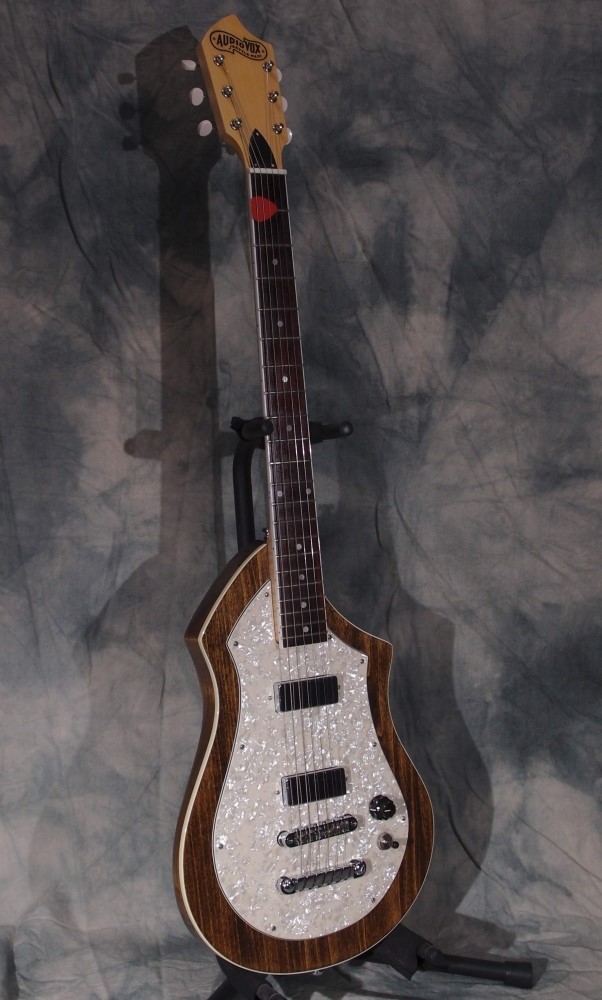
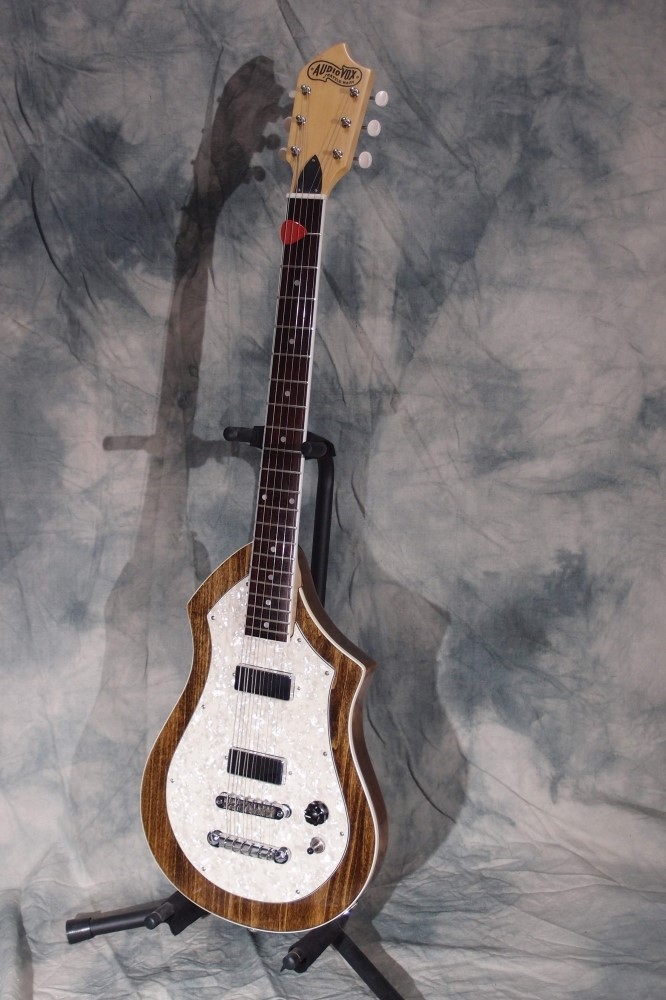
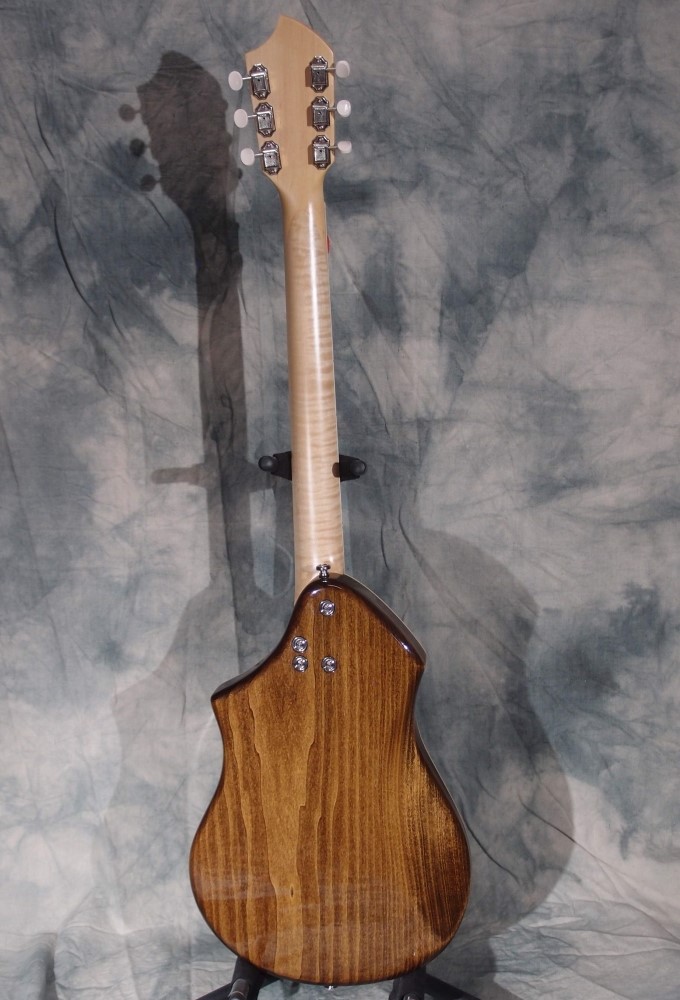
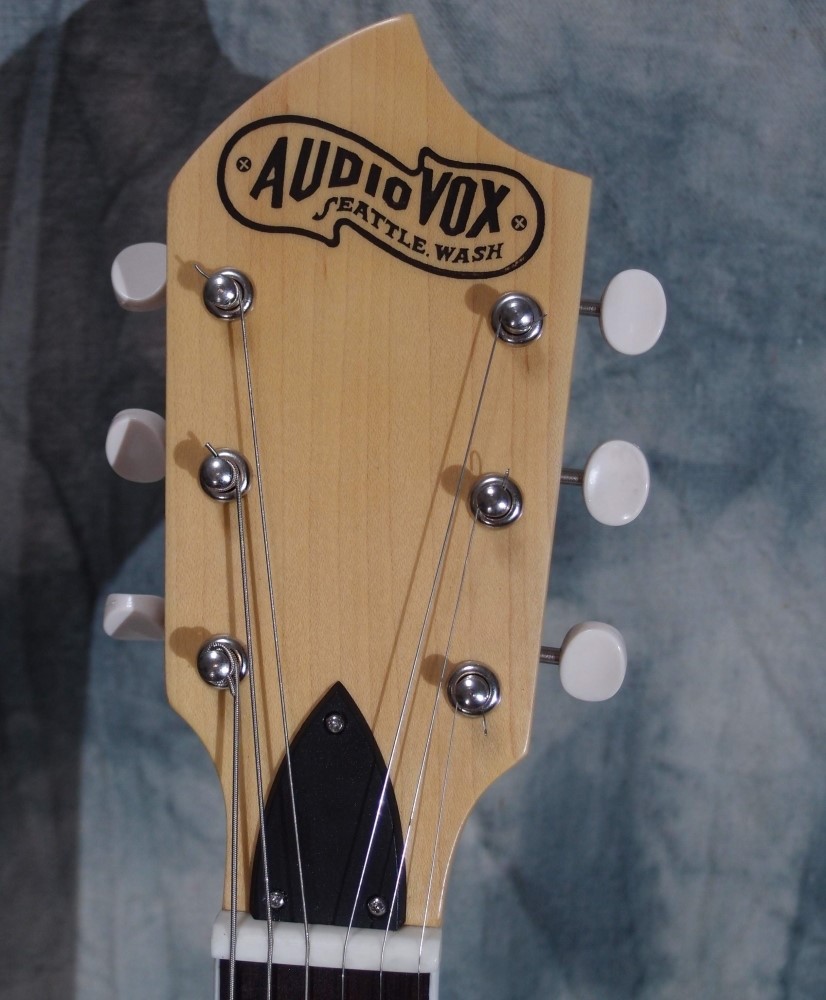
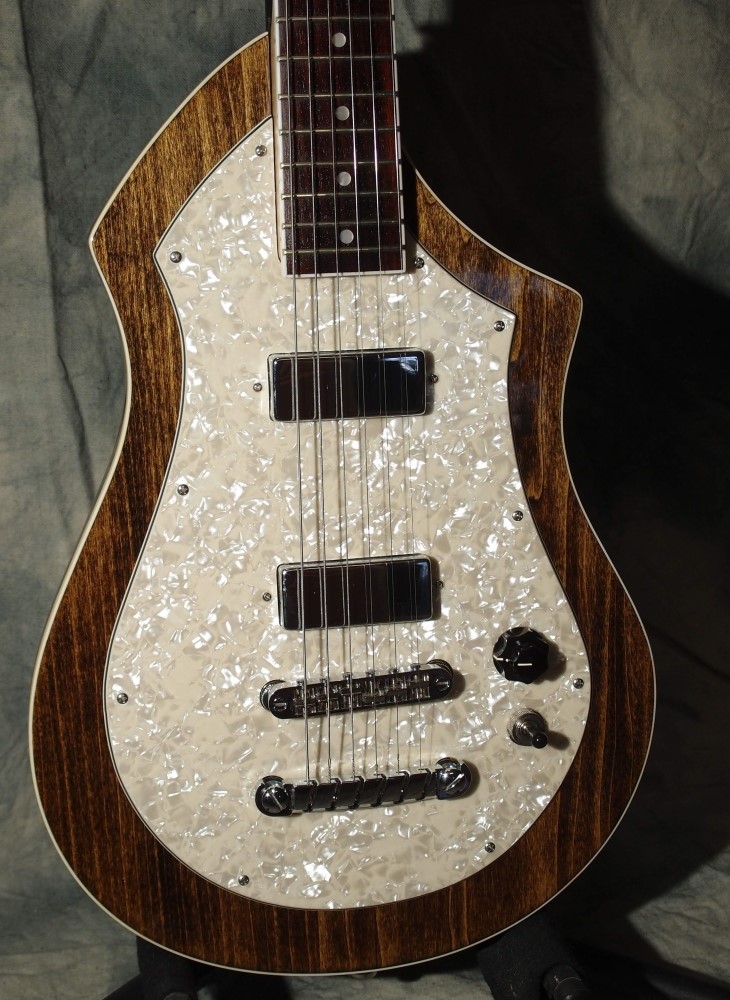
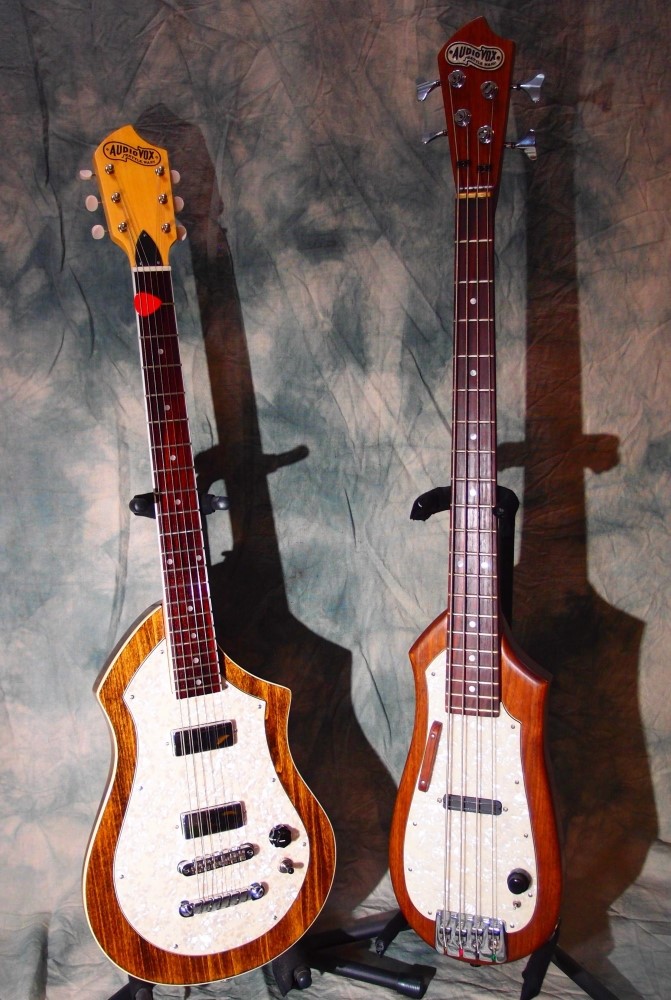
Jul 31, 2017
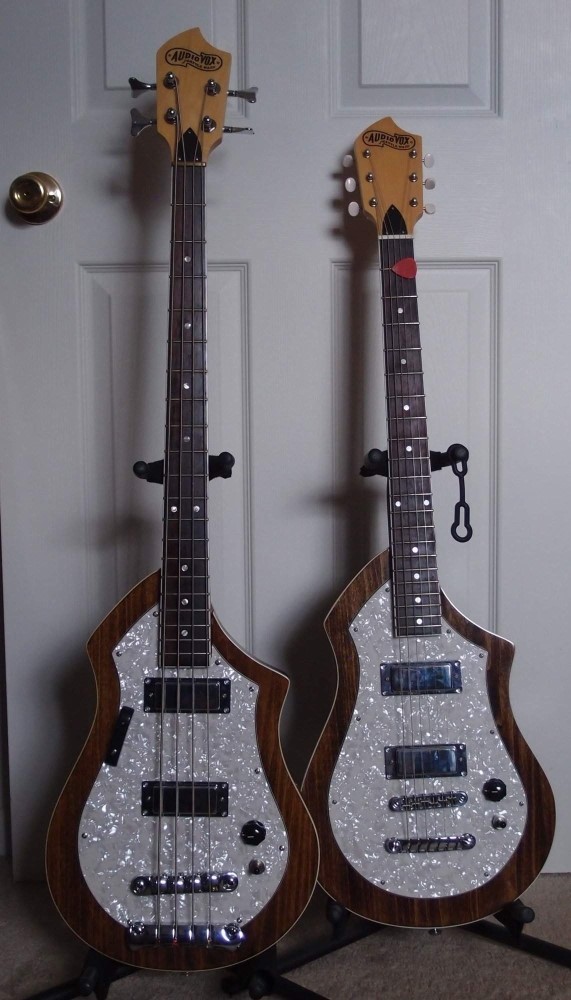
I finally got another Audiovox together. This one is a twin to the guitar.
Specs:
- mini humbuckers wired in parallel, roughly Ric positions
Jazz bass stacked control
Fender standard short-scale neck: maple, 30.3", Strat heel, brass nut
solid poplar body, stained, poly finish ( pores can't breath at all )
roundwound nickel strings, from odds & ends - sounds like a humbucker bass with roundwound strings
plays nice, needed very little adjusting, not even intonation
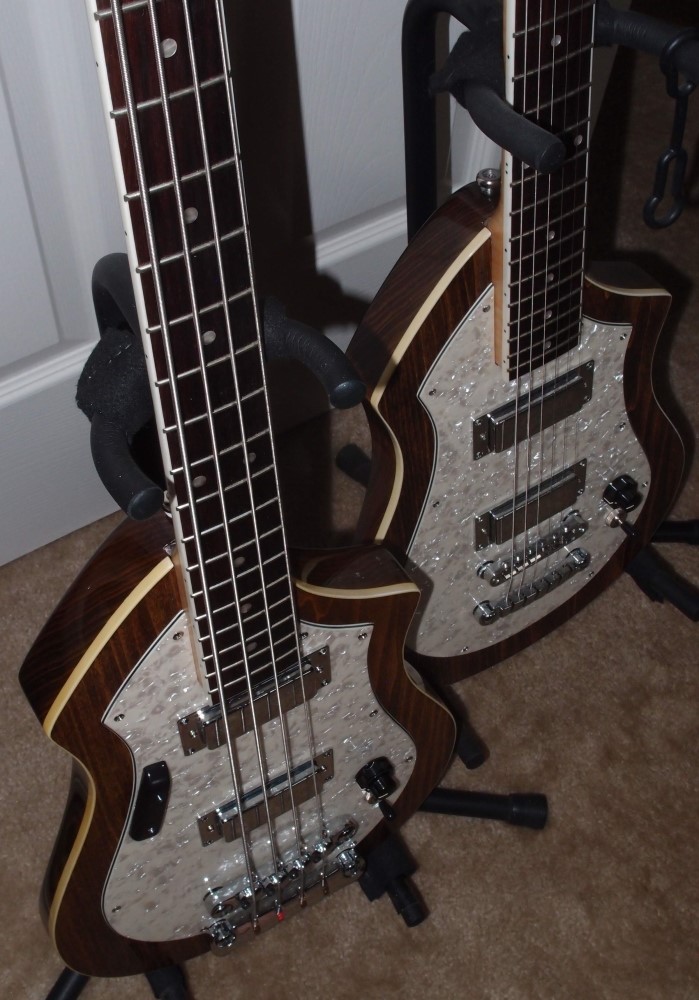
Aug 11, 2017
I've let it settle for 10 days, so now I can start doing some fine tuning: nut, truss rod, action, fret leveling, intonation, etc. It's getting better and better. Here's a shot of the back. Can you believe that's poplar?
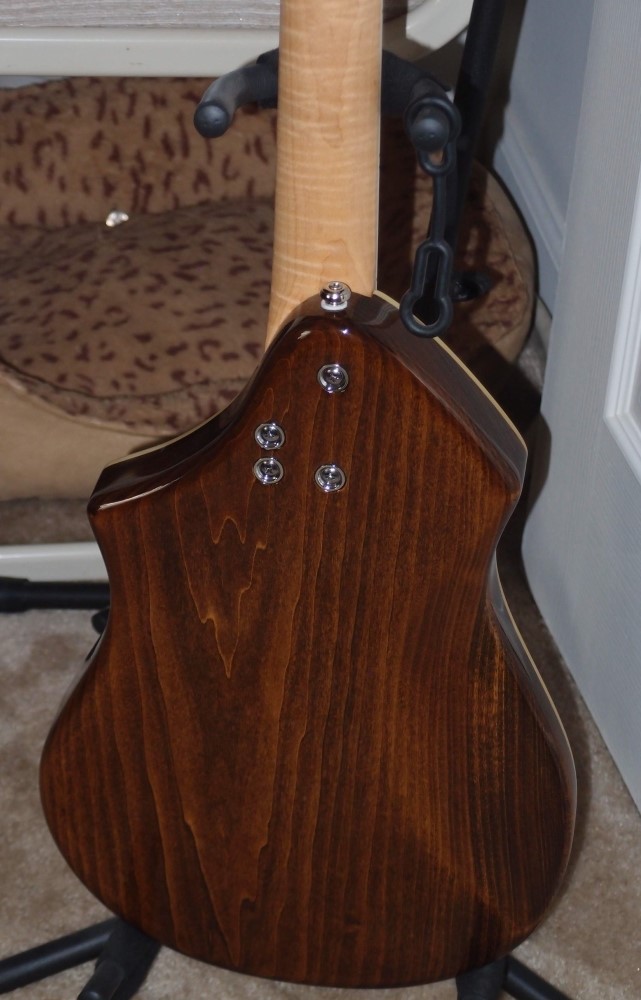
As you can see, the neck is slightly offset, and access to the high frets is quite good. Also, generous round-overs and tummy cut. I actually began the design with a body tracing of a Stratocaster.




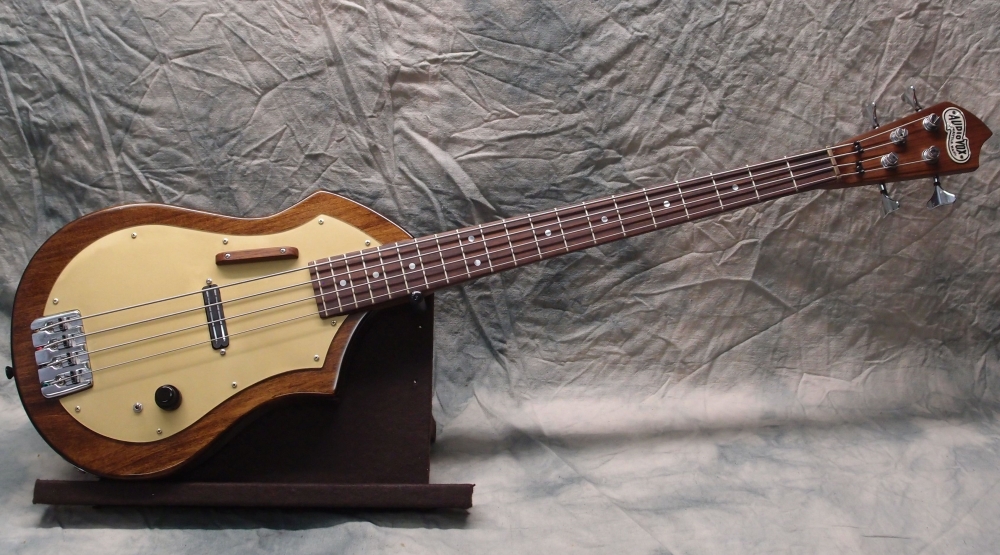
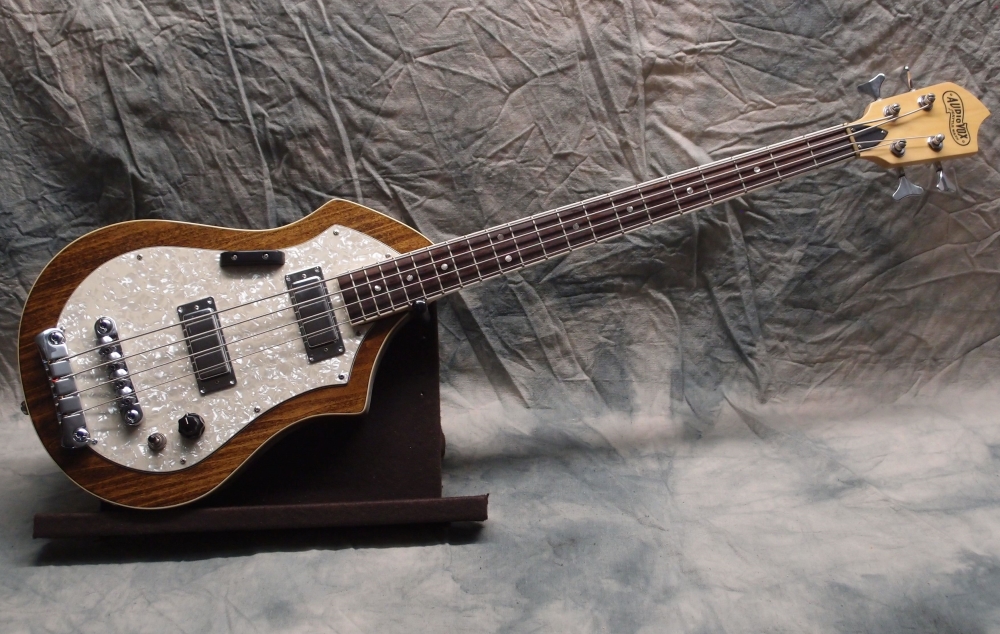
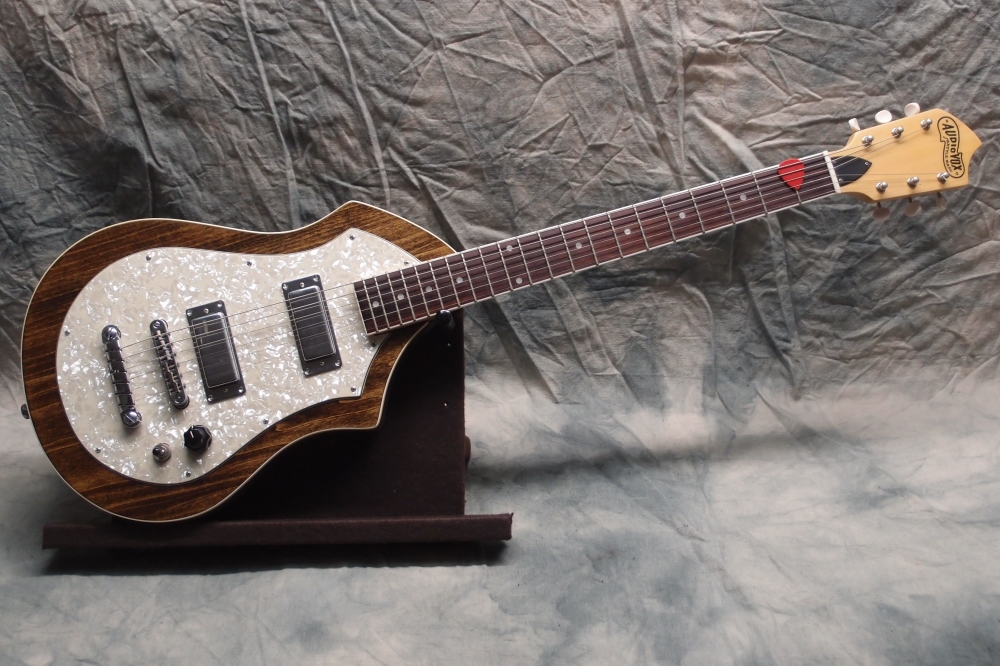
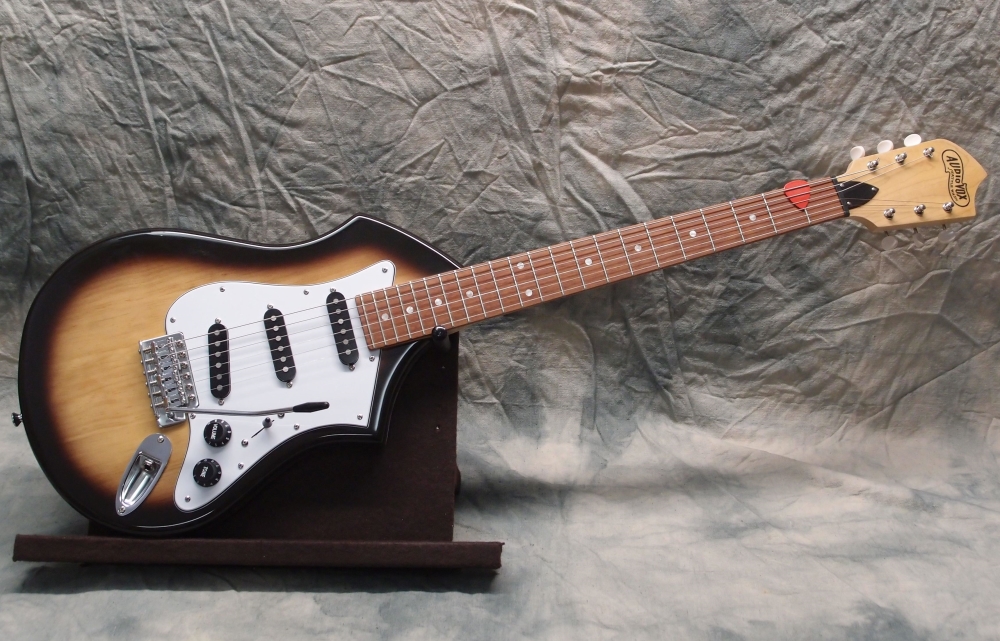
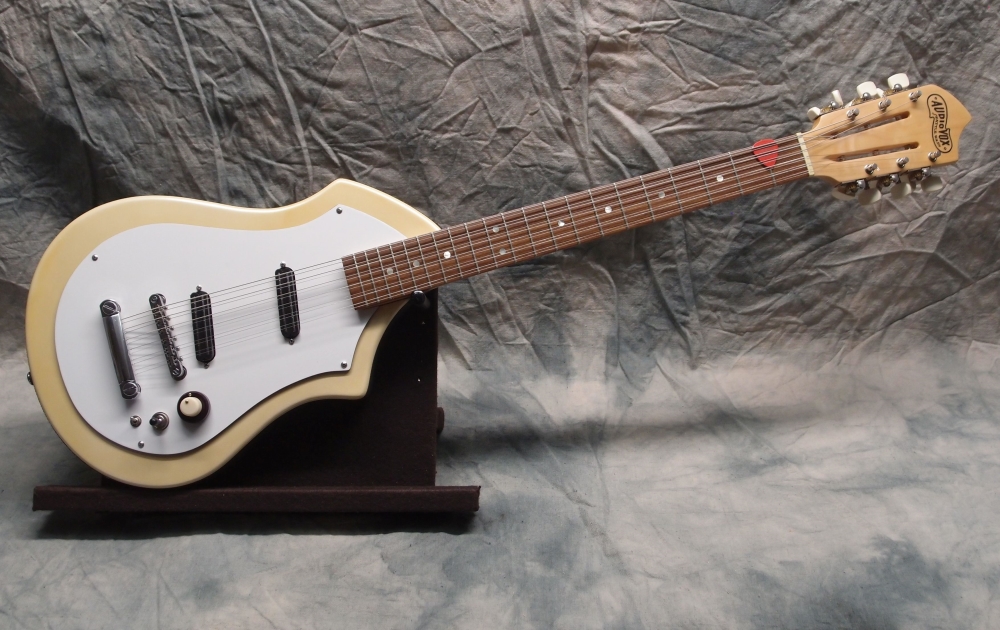
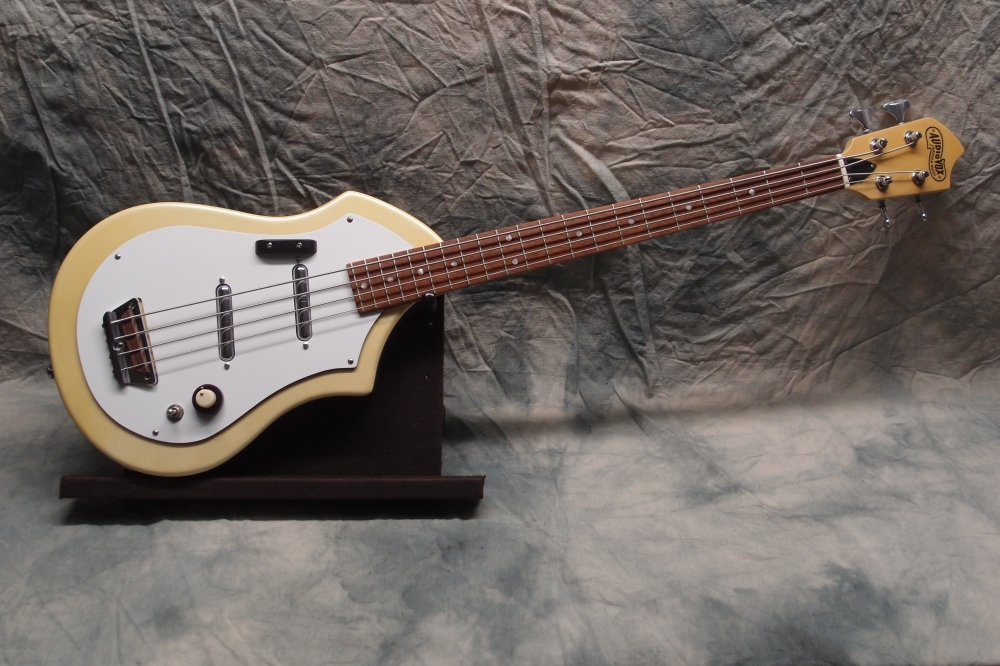
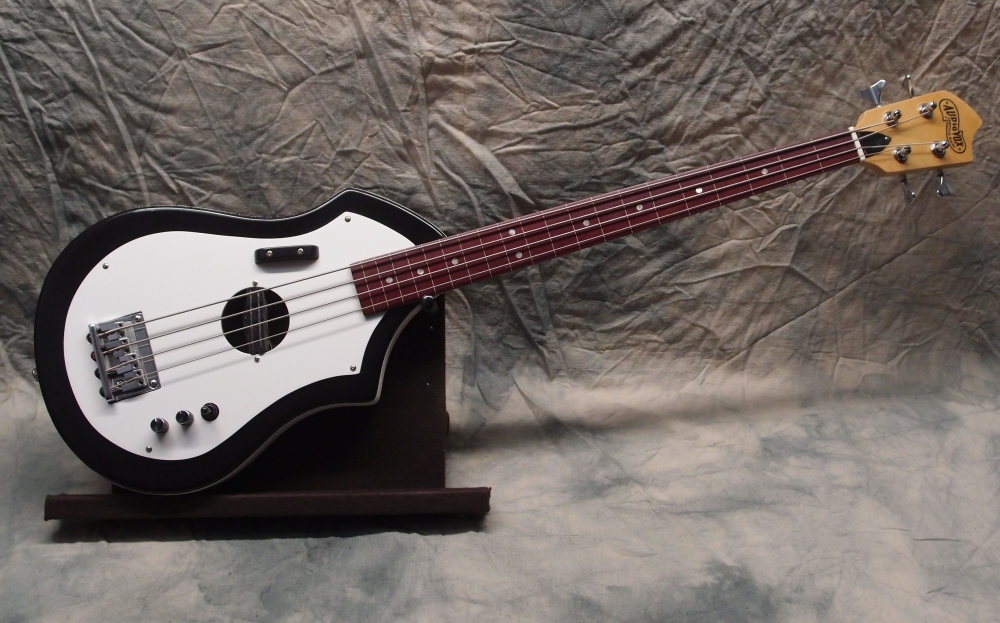
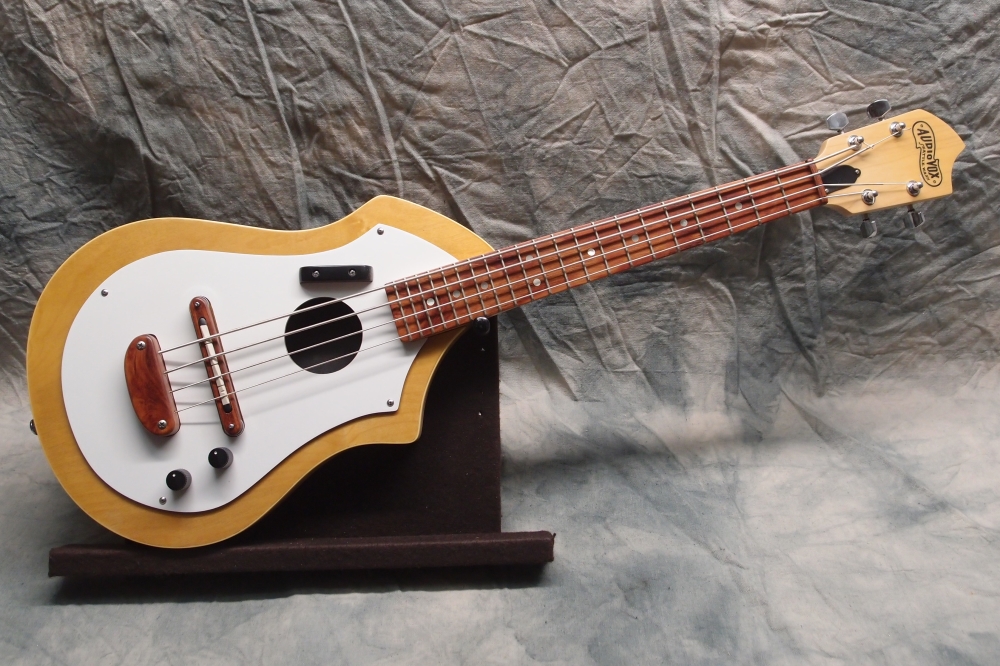
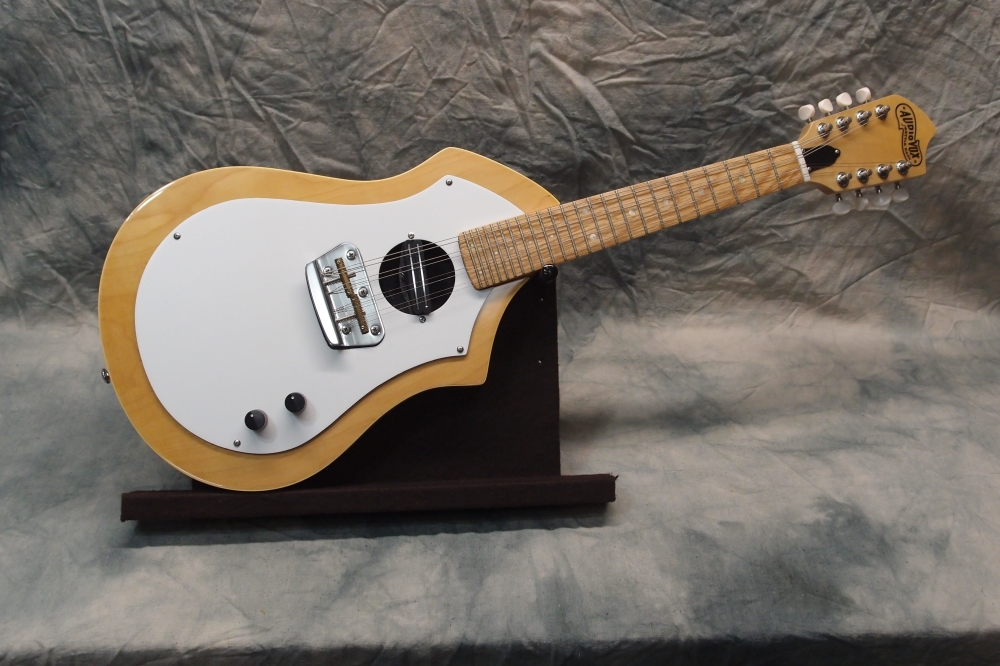
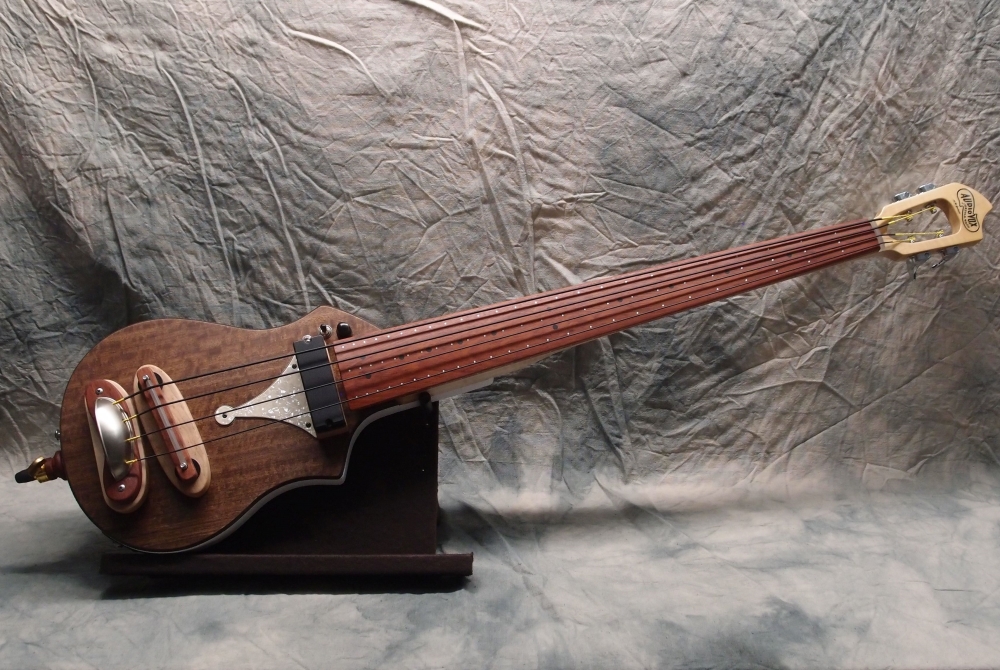

Questions or Inquiries?
Just want to say Hello? Sign the .